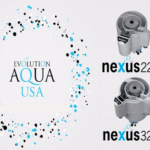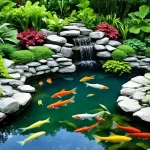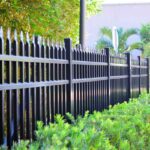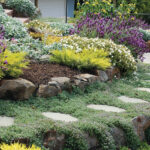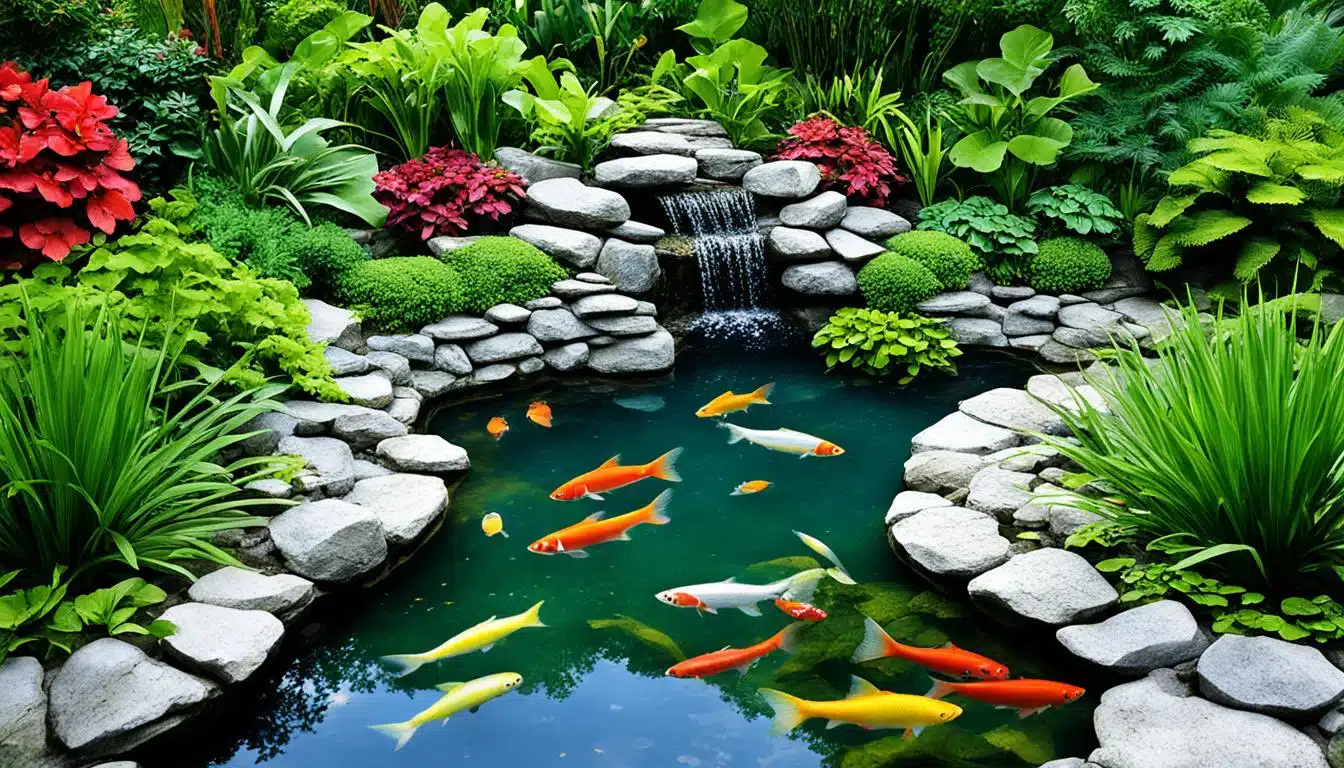Building a Koi pond in your garden can be a fulfilling project that enhances the beauty of your outdoor space while providing a peaceful home for your fish. With various construction methods available, choosing the right approach depends on your preferences, budget, and the level of maintenance you’re prepared for. Let’s dive into the main methods and considerations for Koi pond building.
Understanding Koi Pond Systems: Pump-Fed vs. Gravity-Fed
What Is a Pump-Fed System?
In a pump-fed system, water is drawn from the pond by a pump, passed through a filtration system, and then returned to the pond via gravity. This system is straightforward and typically involves fewer upfront construction costs.
What Is a Gravity-Fed System?
In a gravity-fed system, water exits the pond via a bottom drain or similar outlet, flows through a filtration system by gravity, and is then pumped back into the pond. This method often allows larger filtration units to be hidden, as they’re installed at the same level as the pond’s water line.
Choosing Between the Two Systems
When deciding on the system, consider maintenance and aesthetics. A gravity-fed system often helps keep the pond clearer by efficiently removing waste buildup, while a pump-fed system can be a simpler option for smaller or budget-conscious setups.
Construction Methods for Koi Ponds
1. Hole-in-the-Ground Pond
This is the most basic and cost-effective method for Koi pond building. Here’s how it works:
- Steps: Dig a hole, line it with pond liner, and install the chosen system (pump-fed or gravity-fed).
- Pros: Minimal cost and simplicity.
- Cons: Limited structural integrity and durability compared to other methods.
2. Sleeper Pond
A sleeper pond is built using wooden sleepers, offering a more modern look and flexibility.
- Steps: Stack and secure sleepers to form the pond walls, then line the interior and install filtration.
- Pros: Quicker to build and less permanent than concrete structures.
- Cons: May not last as long as block-built systems and requires regular maintenance.
3. Block-Built Pond
A block-built pond is the gold standard for durability and structural soundness in Koi pond building.
- Steps: Construct walls using concrete blocks, waterproof the interior, and install the chosen system.
- Pros: Highly durable and customizable.
- Cons: Higher cost and requires professional expertise.
4. Preformed Pond
Preformed ponds are plastic molds available in various shapes and sizes.
- Steps: Purchase a preformed mold, dig a hole that fits the mold, and set it in place.
- Pros: Easy to install and beginner-friendly.
- Cons: Limited design flexibility due to predefined shapes and sizes.
Design Considerations for a Koi Pond
Minimizing Objects in the Pond
Avoid adding unnecessary structures or decorations in the pond to reduce the risk of physical harm to your Koi and minimize waste accumulation.
Efficient Waste Management
Ensure that the pond’s bottom is designed to channel waste effectively into the filtration system. This is especially crucial in gravity-fed systems with bottom drains.
Pond Depth and Size
Koi require ample space and depth for healthy growth. Aim for a pond depth of at least 4 feet to support their needs and maintain water temperature stability.
Final Thoughts
Koi pond building requires thoughtful planning and attention to detail. The method you choose will depend on your goals, budget, and available resources. Whether you go with a simple hole-in-the-ground pond or invest in a professionally built block pond, the key is to create a thriving environment for your fish.
FAQs
1. How big should a Koi pond be?
A Koi pond should ideally be at least 1,000 gallons and have a depth of 4 feet or more. This ensures enough space for the fish to thrive and grow.
2. What is the best filtration system for a Koi pond?
Gravity-fed systems are often preferred for larger ponds, while pump-fed systems are suitable for smaller setups.
3. How much does it cost to build a Koi pond?
Costs vary widely depending on the method and size. Basic ponds can start at a few hundred dollars, while professionally built block ponds can cost several thousand.
4. Do Koi ponds need a bottom drain?
While not mandatory, a bottom drain significantly improves waste removal and overall water quality, especially in gravity-fed systems.
5. Can I build a Koi pond myself?
Yes, DIY construction is possible for simpler designs like hole-in-the-ground or preformed ponds. However, professional help is recommended for more complex methods like block-built ponds.
Stay in touch to get more updates & news on The Home Action!

